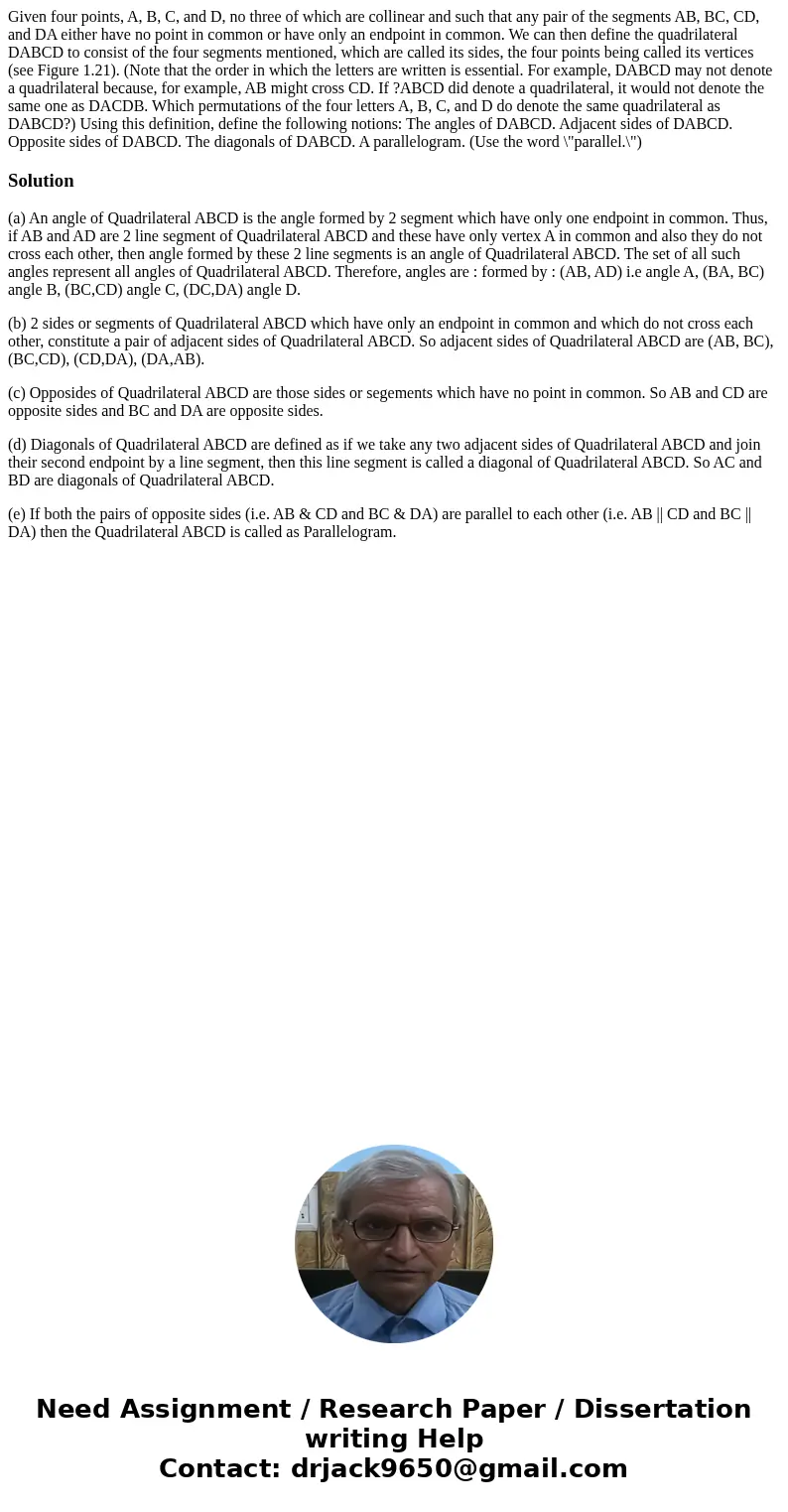Given four points A B C and D no three of which are collinea
Solution
(a) An angle of Quadrilateral ABCD is the angle formed by 2 segment which have only one endpoint in common. Thus, if AB and AD are 2 line segment of Quadrilateral ABCD and these have only vertex A in common and also they do not cross each other, then angle formed by these 2 line segments is an angle of Quadrilateral ABCD. The set of all such angles represent all angles of Quadrilateral ABCD. Therefore, angles are : formed by : (AB, AD) i.e angle A, (BA, BC) angle B, (BC,CD) angle C, (DC,DA) angle D.
(b) 2 sides or segments of Quadrilateral ABCD which have only an endpoint in common and which do not cross each other, constitute a pair of adjacent sides of Quadrilateral ABCD. So adjacent sides of Quadrilateral ABCD are (AB, BC), (BC,CD), (CD,DA), (DA,AB).
(c) Opposides of Quadrilateral ABCD are those sides or segements which have no point in common. So AB and CD are opposite sides and BC and DA are opposite sides.
(d) Diagonals of Quadrilateral ABCD are defined as if we take any two adjacent sides of Quadrilateral ABCD and join their second endpoint by a line segment, then this line segment is called a diagonal of Quadrilateral ABCD. So AC and BD are diagonals of Quadrilateral ABCD.
(e) If both the pairs of opposite sides (i.e. AB & CD and BC & DA) are parallel to each other (i.e. AB || CD and BC || DA) then the Quadrilateral ABCD is called as Parallelogram.

 Homework Sourse
Homework Sourse